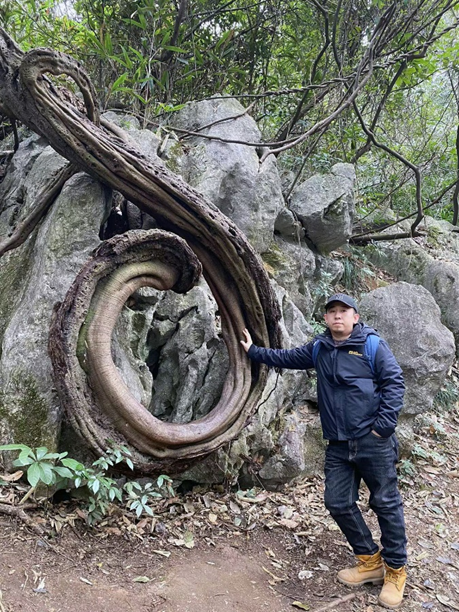2023 HARPER PRIZE SHORTLIST: Throughout March, we are featuring the articles shortlisted for the 2023 Harper Prize. The Harper Prize is an annual award for the best early career research paper published in Journal of Ecology. Siyuan Wang’s article ‘Lianas have a faster resource acquisition strategy than trees: Below-ground evidence from root traits, phylogeny and the root economics space‘ is one of those shortlisted for the award:
👋 About me
I grew up in Heilongjiang province, a northeastern area in China. I have been interested in nature since I was a child. Although my bachelor’s (Northeast Forest University, CHN) and master’s (University of Liverpool, UK) degrees mainly focused on landscape architecture, I still have an interest in nature, plants, and ecology. During my studies, I had the opportunity to learn about the characteristics of different plants. Especially climbing plants, which are widely used in urban gardening, roof greening, and urban ecological restoration. Planting lianas is significant to the ecology and environment of the city. Gradually, I became very interested in studying the ecology and physiology of lianas. In 2019, I started my doctorate studies (Northeast Forest University) under the supervision of Prof. Yang Lixue and Prof. Gu Jiacun, and my research is focused on the root and leaf functional traits of lianas in tropical and temperate forests. In June 2023, I finished my Ph.D. study and started my postdoctoral research at the Institute of Applied Ecology, Chinese Academy of Science, Shenyang. Currently, my research is the eco-physiological study of plant roots.
🔎 About the shortlisted paper
The continually increasing abundance and diversity of lianas (woody climbers) in tropical and temperate forests caused by global climate change and forest fragmentation strongly reduce tree growth and affect forest composition and carbon sequestration. Previous studies have shown that such higher abundance and diversity of lianas are associated with their wide ecological adaptations, because of their competitive advantage over trees across diverse habitats. These studies mainly focused on above-ground functional traits such as leaves and stems, however, the relative contribution of root functional traits to the competitive superiority of lianas over trees has not yet been evaluated.
In this study, we explored the root functional traits, phylogeny, and root economics space of lianas and their difference between trees. To be specific, liana roots had higher specific root length, root branching ratio, and nitrogen concentration, as well as lower tissue density than trees. These results indicated that the liana roots have more advantages in resource exploration and tissue construction costs compared with trees. In addition, lianas occupied the acquisitive side of the root economics space and showed a ‘fast’ strategy, whereas trees occupied the conservative side and displayed a ‘slow’ strategy (Figure 1).

Such findings highlights the difference between the two plant growth forms in root resource acquisition strategies and life history strategies. Moreover, most of the liana root traits did not exhibit stronger phylogenetic signals, indicating that liana roots had much weaker phylogenetic conservatism than trees. The lower phylogenetic constraint in liana roots may promote them to evolve more flexible below-ground ecological strategies and enhance their capacity to colonize multiple habitats and perform wide ecological adaptations. Collectively, our study revealed why lianas have evolved to be superior competitors from a below-ground perspective. These findings are important for our deep understanding of the roles of lianas in forest ecosystems.
📈 My current research
One of my current studies is exploring the variation of root functional traits and their strategies within different plant growth forms (such as trees, shrubs, lianas, herbs, and ferns) in a certain forest community. Our results showed that the plant growth forms may be an important driver for controlling the root strategies shifting from fast to slow at a local scale. Such findings may enhance our understanding of the mechanisms of community assembly and stability. Another study is investigating the relationship between the root functional traits and leading dimensions of resource absorption and transportation in woody plants. In my opinion, this is an interesting work, because the two functions are essential for maintaining roots and whole plant performance in the changing environments.
Read the full list of articles shortlisted for the 2023 Harper Prize here.

